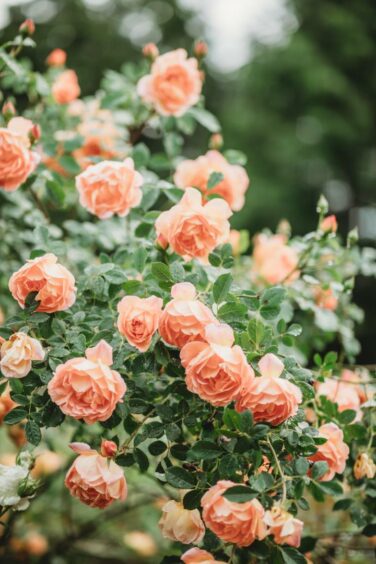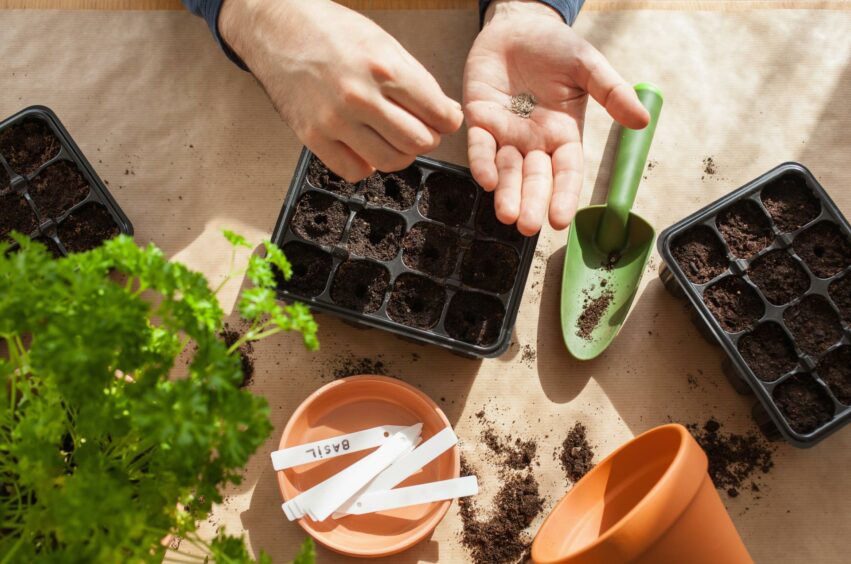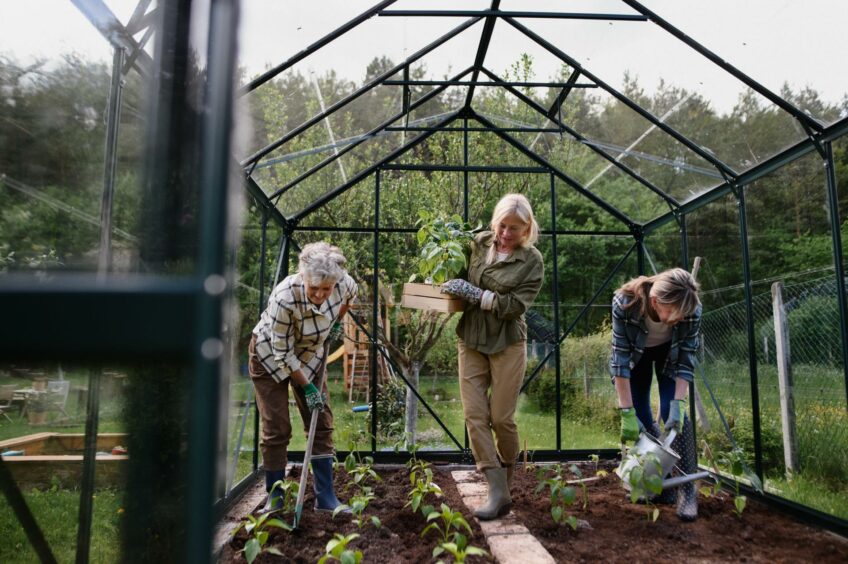Sometimes there’s so much to do, you don’t quite know where to start. I’m feeling this way in the garden just now.
But this is one of the rare times when it’s not a burden and I’m just enjoying being outdoors, cherry-picking my way through the jobs.
Just now I think every job that I need to do in my garden needs done yesterday so I’m having a great time doing all nice jobs I want to do.
Learning to love roses
Top of the list was feeding my roses. I’ve never been one for growing the classic of all garden plants as I could never be bothered with all that hassle needed to keep them looking good and healthy.
Roses are a nightmare for suffering from fungal diseases, the likes of powdery mildew and black spots that affect the leaves.
The disease itself looks unsightly but can also result in the plants being defoliated presenting a framework of naked stems with the odd pathetic bloom at a time when they should be the centrepiece of the summer garden display.
To keep on top of this meant regular application of fungicide chemical sprays which are not particularly friendly to wildlife like bees.
Despite doing this and choosing rose plants that were supposedly resistant to these kind of diseases, I always still seemed to fail so I just gave up.
Giving roses every chance
My attitude has changed after gaining a better understanding of rose plants plus the pests, diseases and disorders that affect them. I guess living through a pandemic has also helped this make sense for me.
In the same way Covid has evolved into different strains so do the fungus that infect roses, I now accept I may only get so many years from a rose before it will need replaced.
Like us humans, a healthy plant will be strong enough to fight off nasties and I’m giving my roses every chance.
I’ve started off by applying some organic rose fertiliser around the base of the plant then covering this over with a mulch of well rotted farm-yard manure a few inches/ 7cm thick.
You don’t have to live on a farm to get your hands on this stuff with bags available from nurseries and garden centres which just now are stocked with everything we need for the growing season ahead.
I’m also going to be following the advice from the experts at the Rose Society by repeating this again in June, and from the beginning of May I’ll start a fortnightly liquid feeding programme, applying it as a root drench and foliage spray.
Sowing the seeds
This is the time for lots and lots of seed sowing with my wee glasshouse at home really starting to fill up now.
If you have any young gardeners in the family then sunflowers are a great starter plant for them. It is so much fun as you encourage them to feed and water them over the summer, watching them growing all the way up to the sky.
No matter if it’s seed for the veg plot, filling a gap by sowing some annuals or moving up a level to grow your own perennials, it’s best to use a specific seed and cuttings compost.
These mixes have less nutrients in them as is not needed until the young seedlings and cuttings develop roots.
At this time of year one minute feels like summer then the next back at winter. It’s definitely risky planting tender plants out this early in spring but I’m very impatient for some of my own salad leaves.
With the luxury of my glasshouse giving frost protection I’ve sown a window tub with lettuce seeds,
I reckon I’ll be able to cut a crop from up to three times before the tub will be needed at the end of May for my summer bedding.
Go easy on the grasses
I’m always slow at joining in the gardening fashions, grasses have been popular for a few years now.
It’s only recently that I’ve taken to them seeing the value in the them gently swaying in the summer breeze, as well as providing winter interest in a dried state particularly when frosted.
This is one of the reasons we refrain from cutting them back until spring the other being the roots are insulated and protected from the worst of the winter weather.
Brightening up with bulbs
With the sun getting warmer and the days getting longer the world seems brighter with every day. What really lights up the spring garden is the colourful bulb display with yellow and blue the perfect spring combination.
I like keeping a circle clear of grass underneath the apple tree that grows on our front lawn.
At this time of year this small spot has the power to light up the whole of this garden.
In February winter aconites grow alongside snowdrops and now I have clumps of the blue flowering grape hyacinth.
Thankfully there’s still enough room for a few plantings of yellow flowering dwarf daffodils.
If I’m lucky they’ll still be in bloom when my apple tree flowers. What a picture that’ll be.













